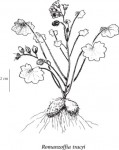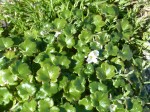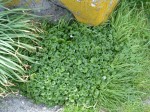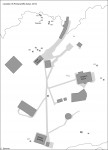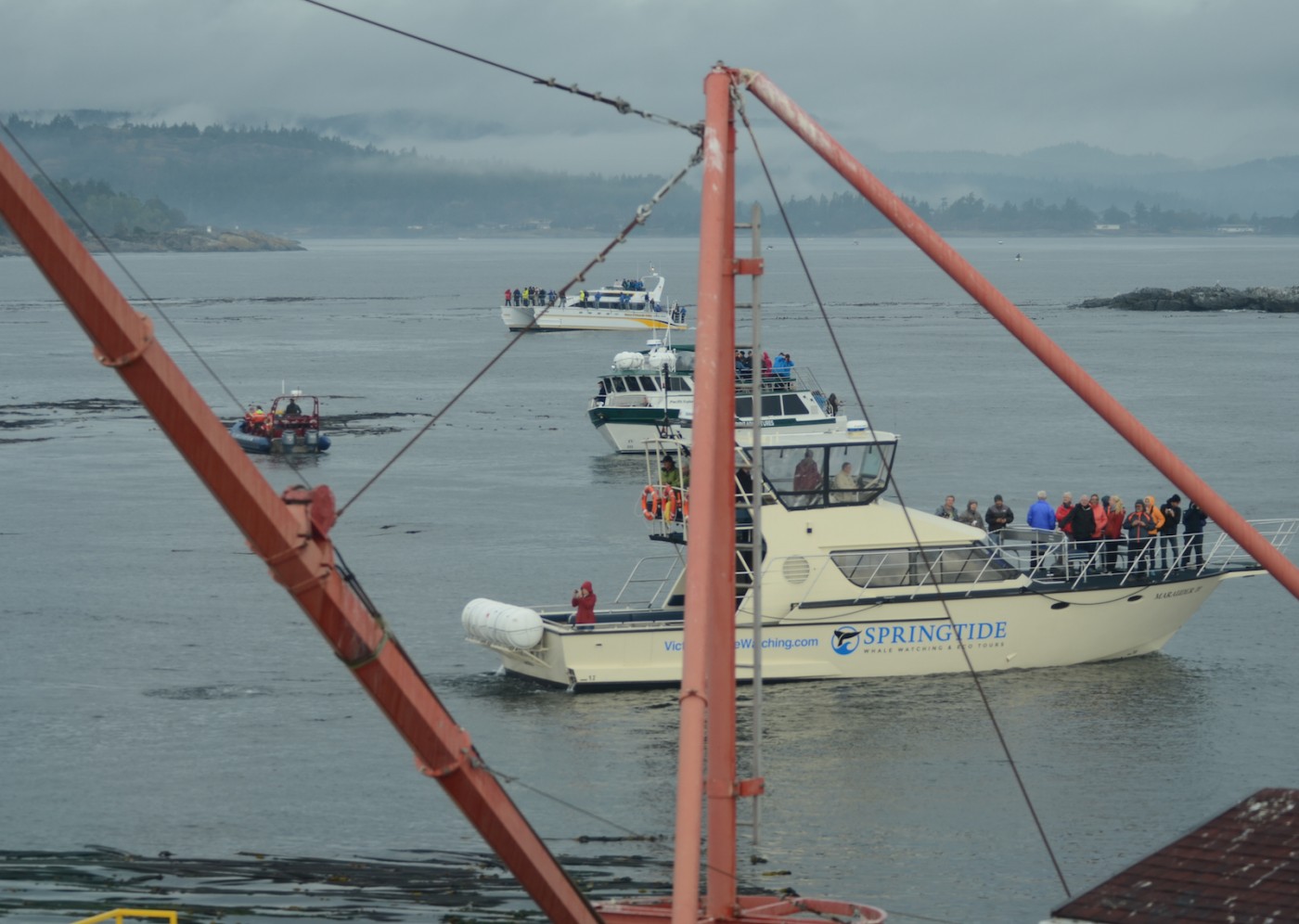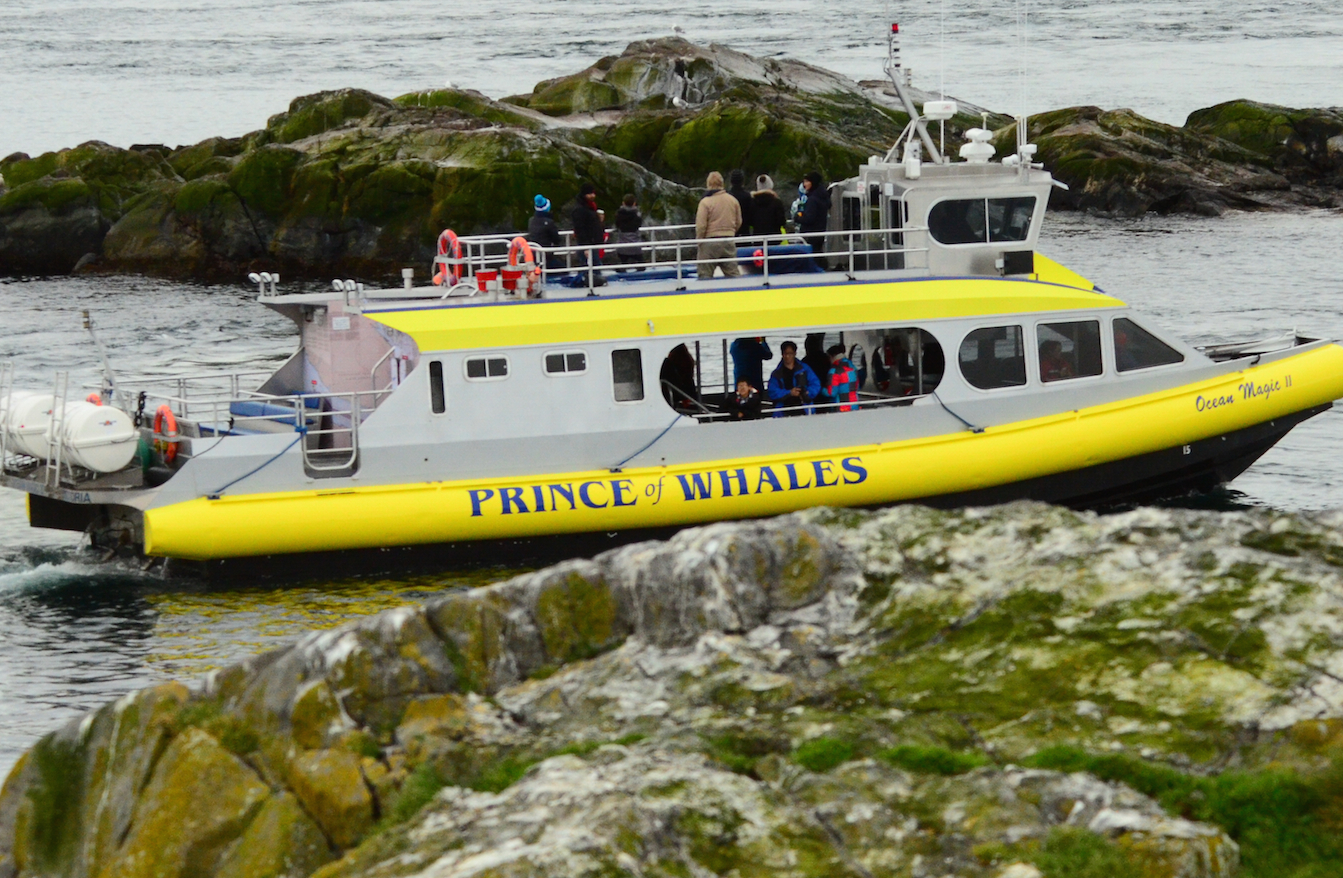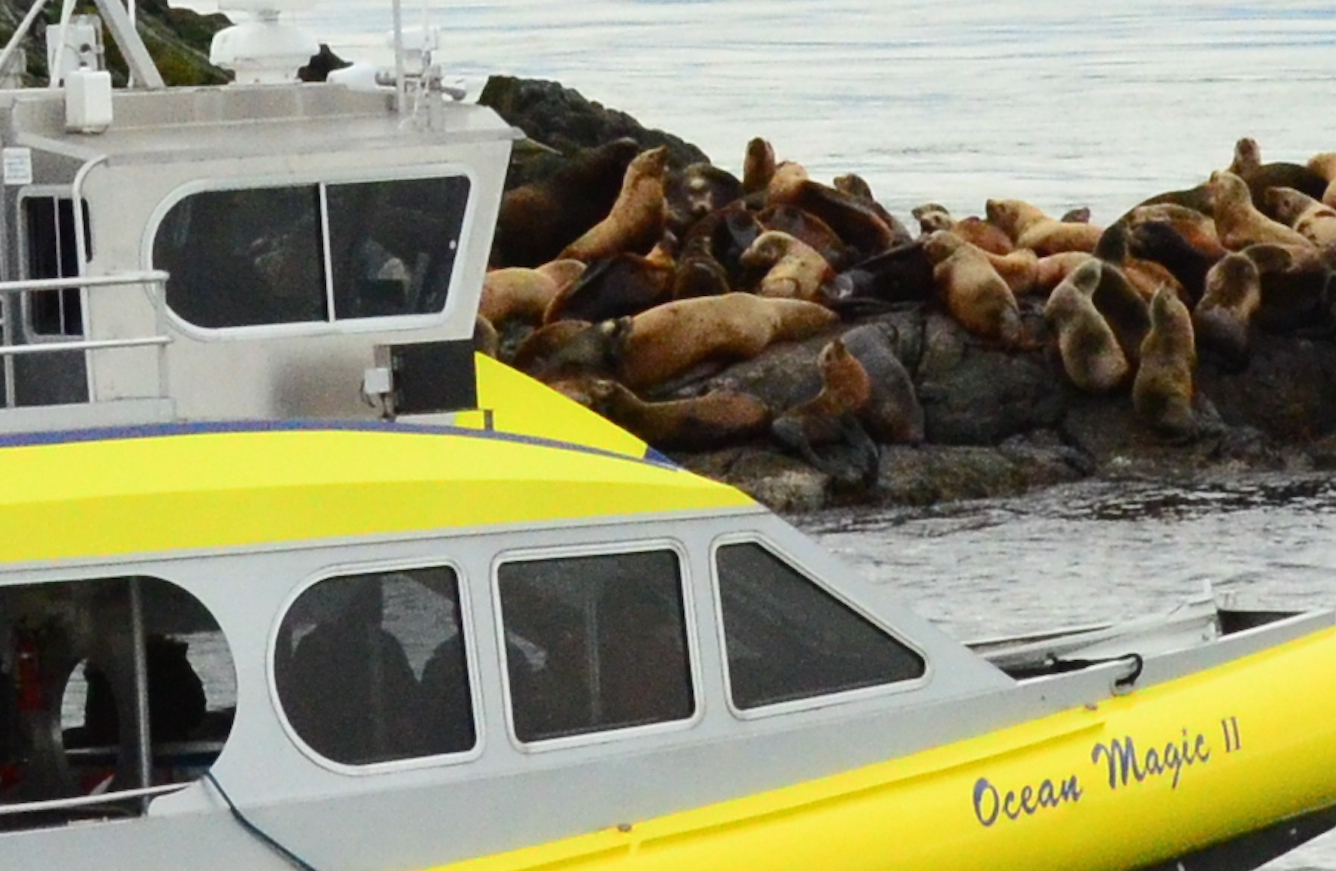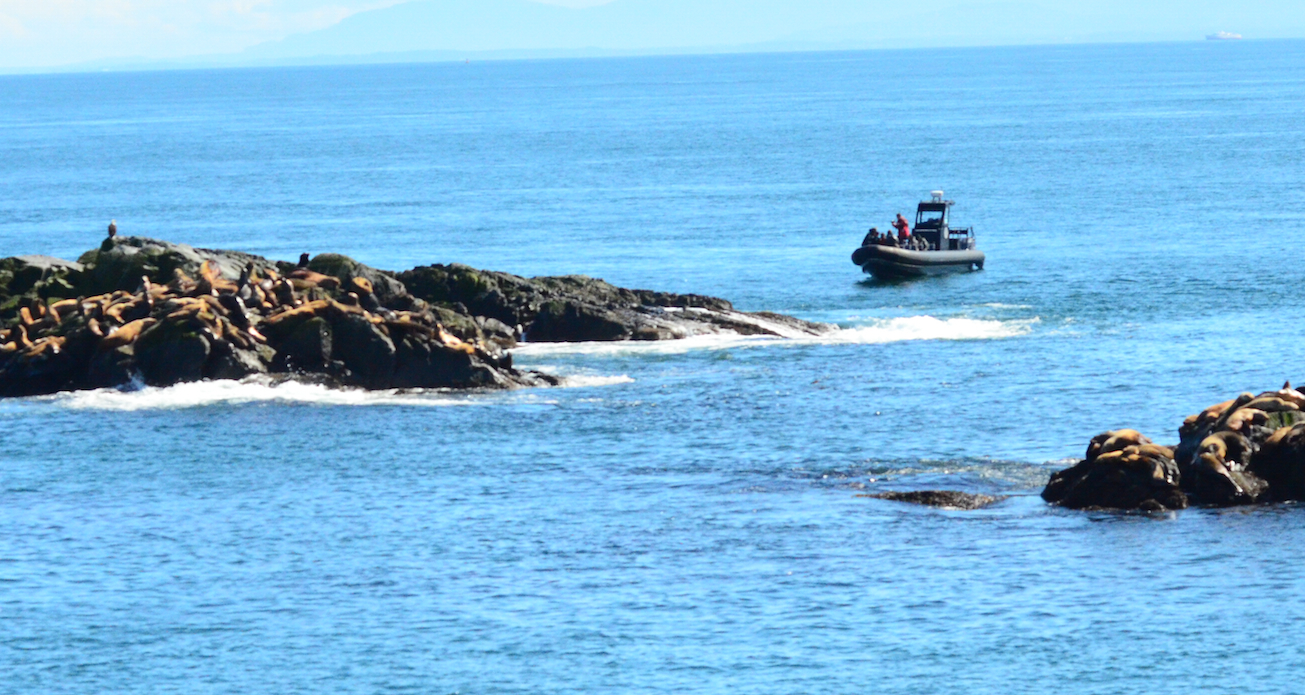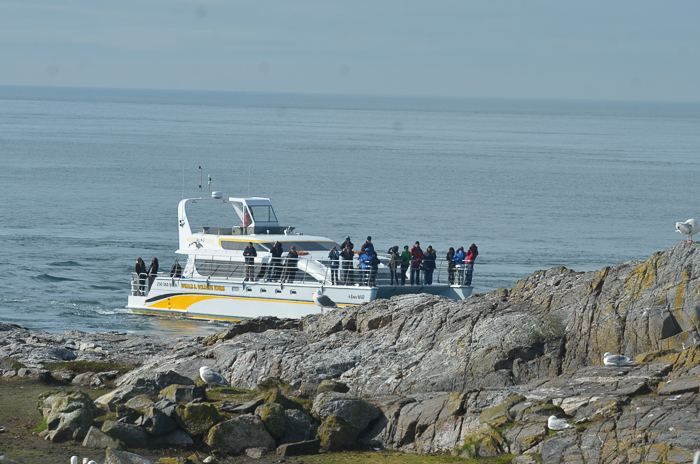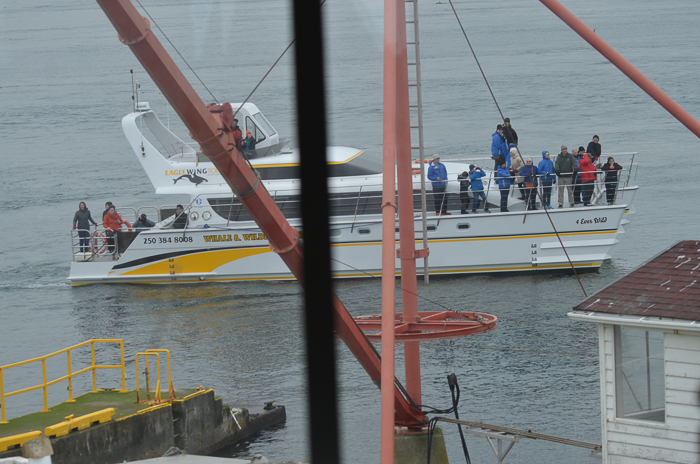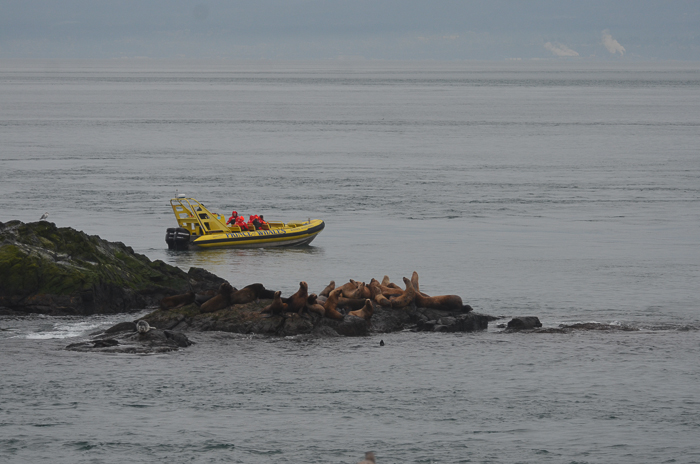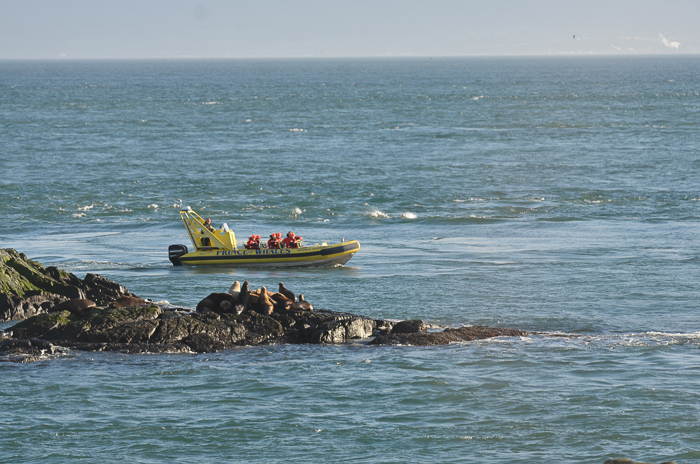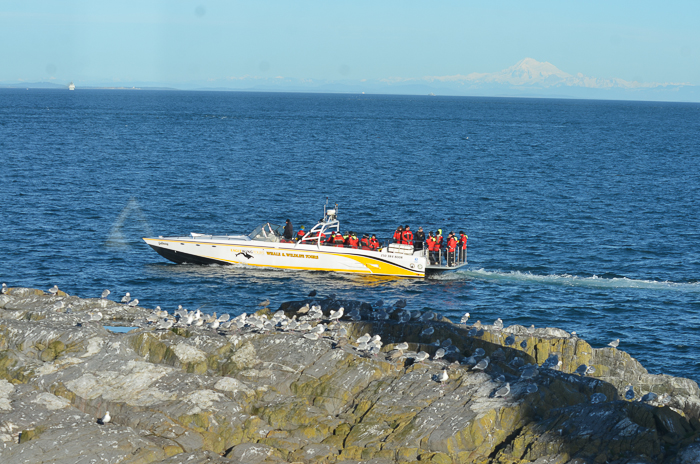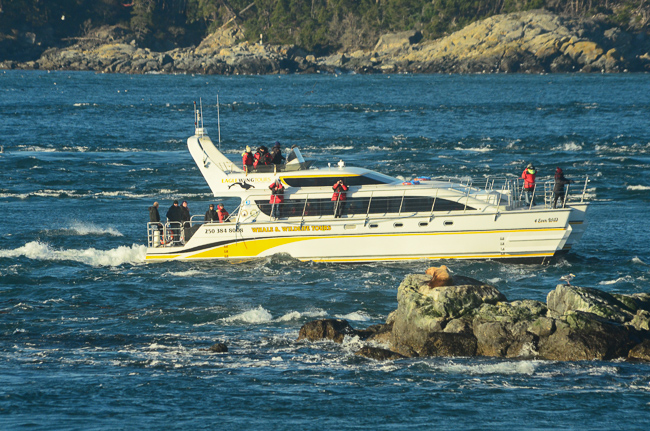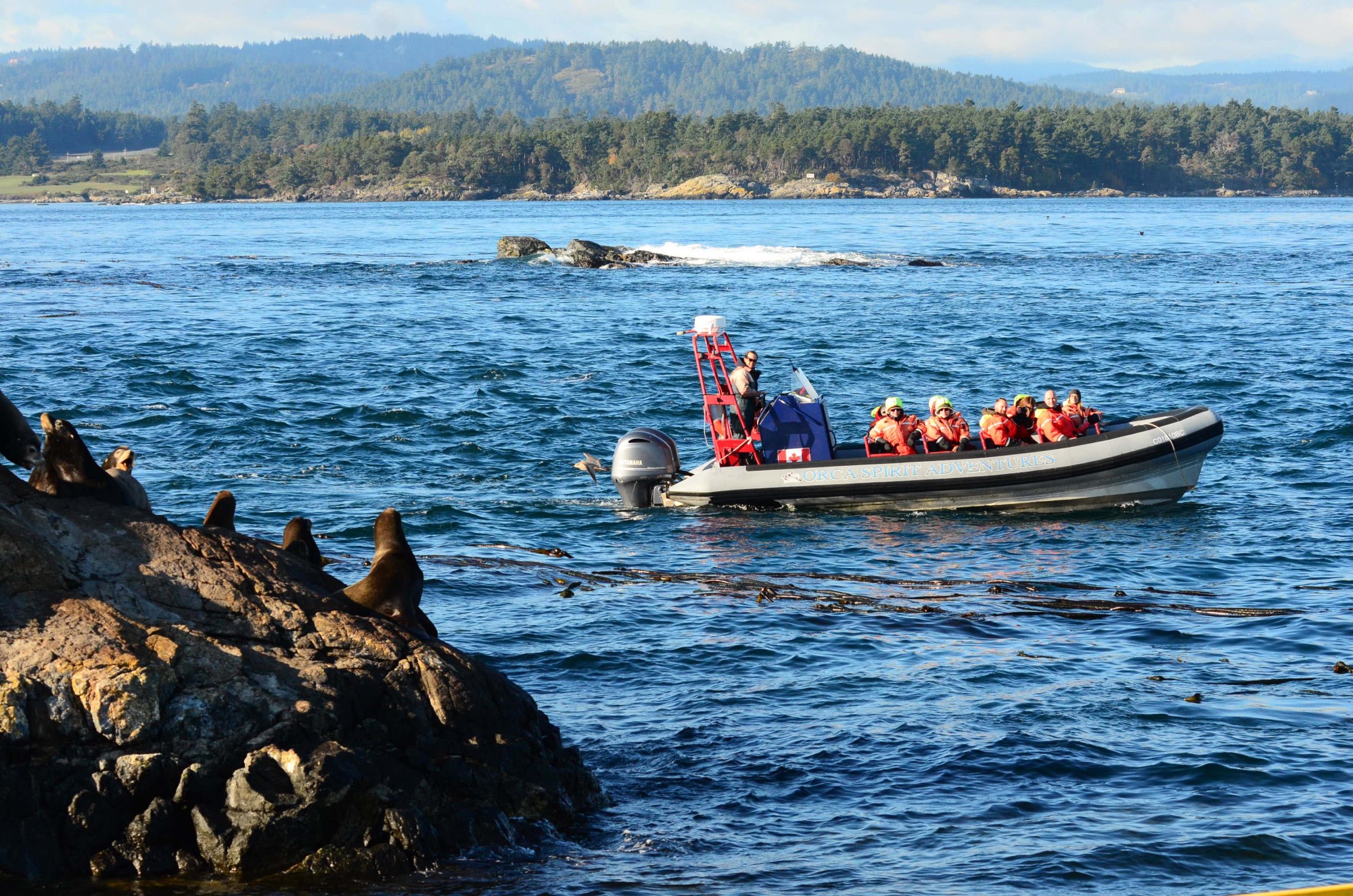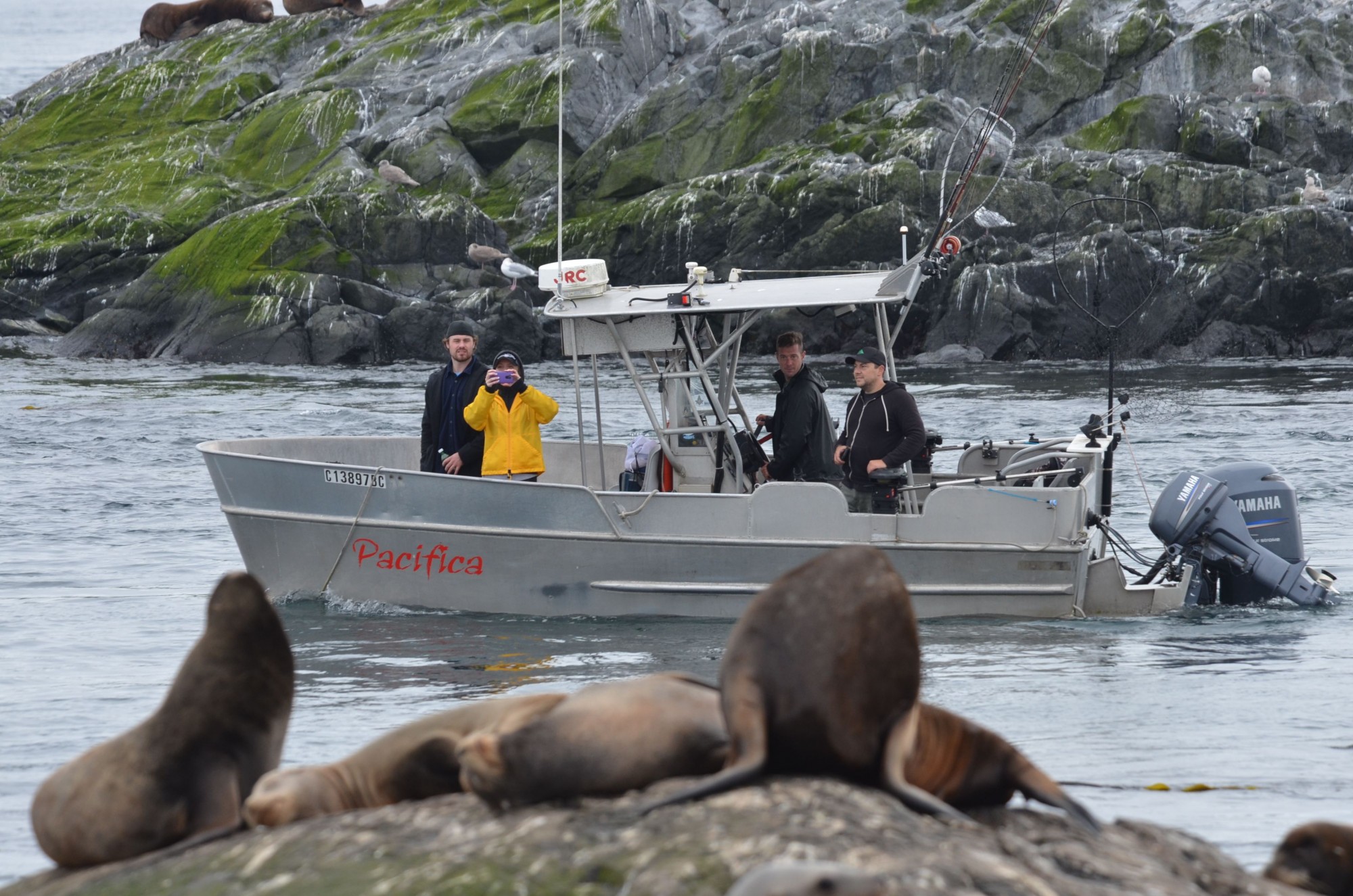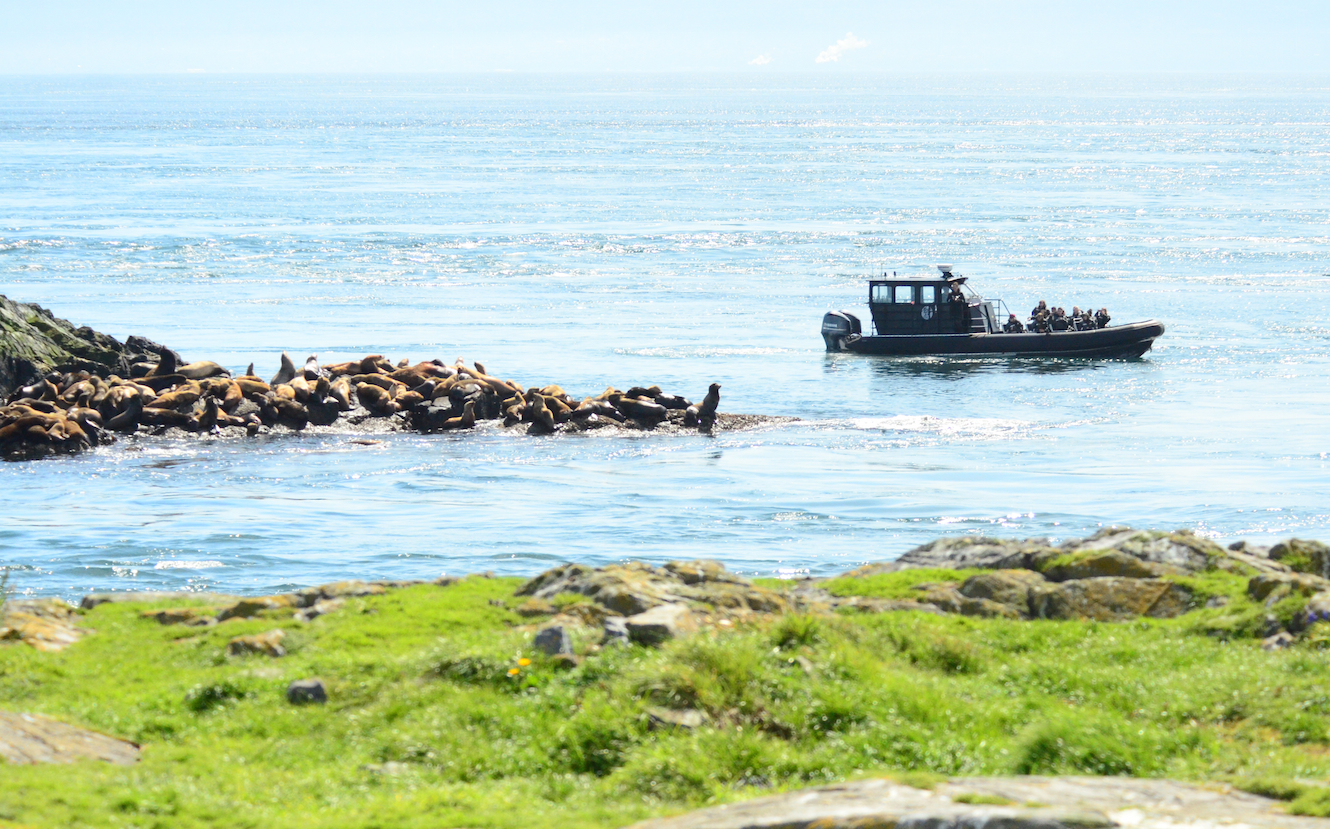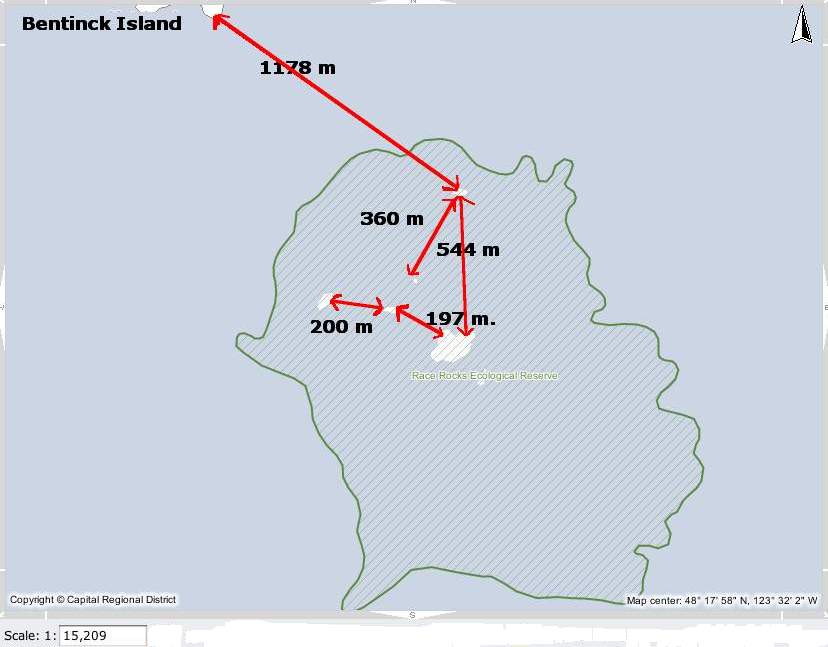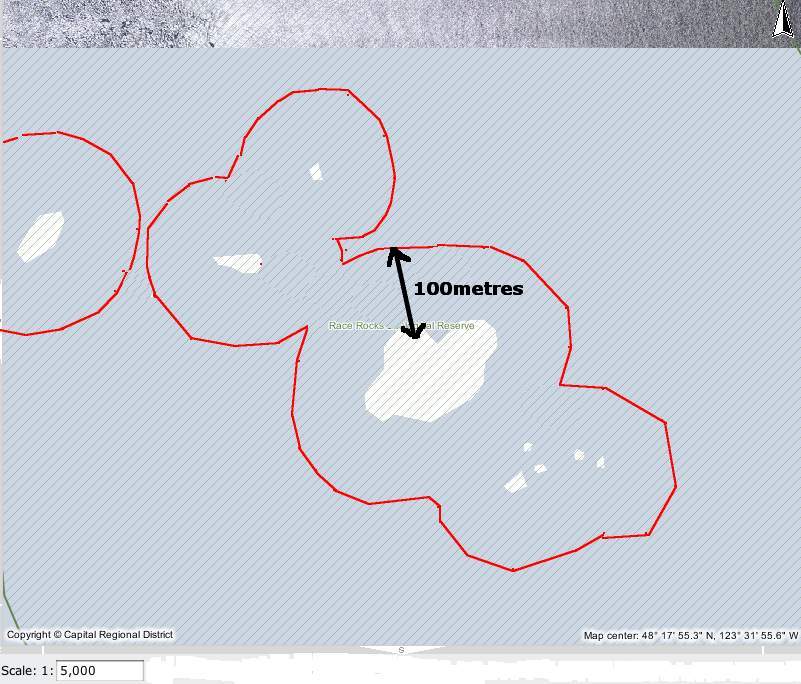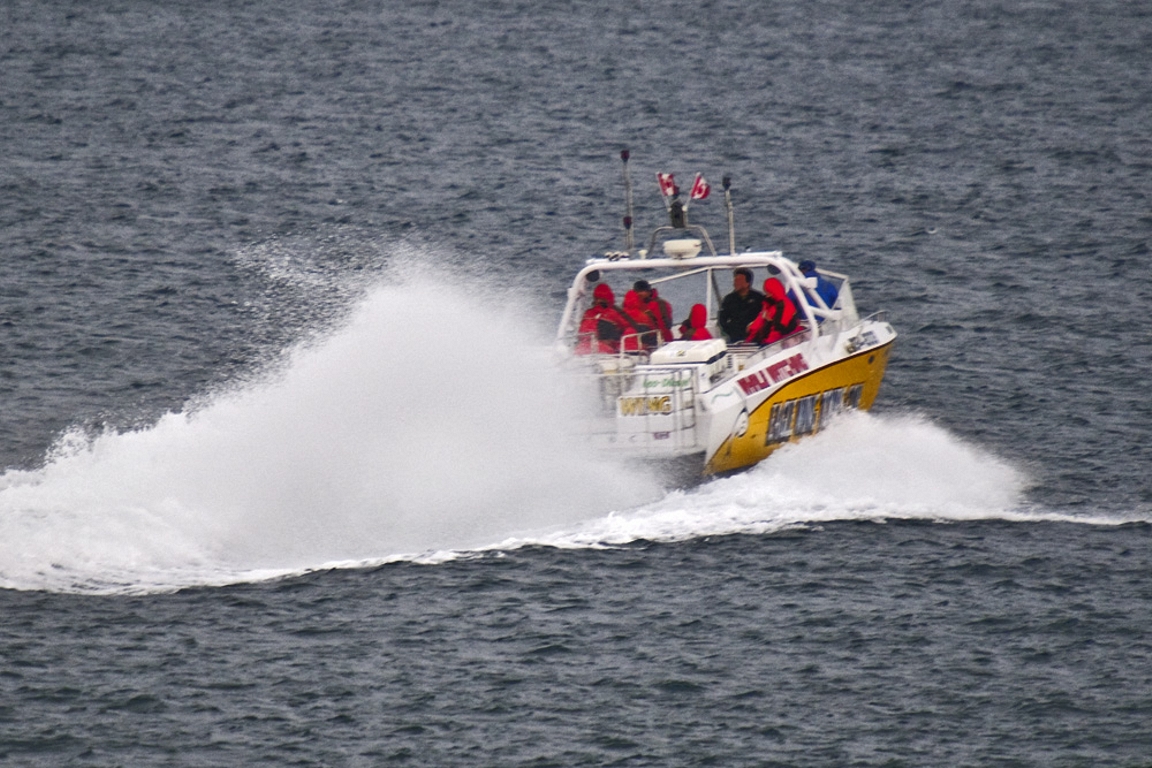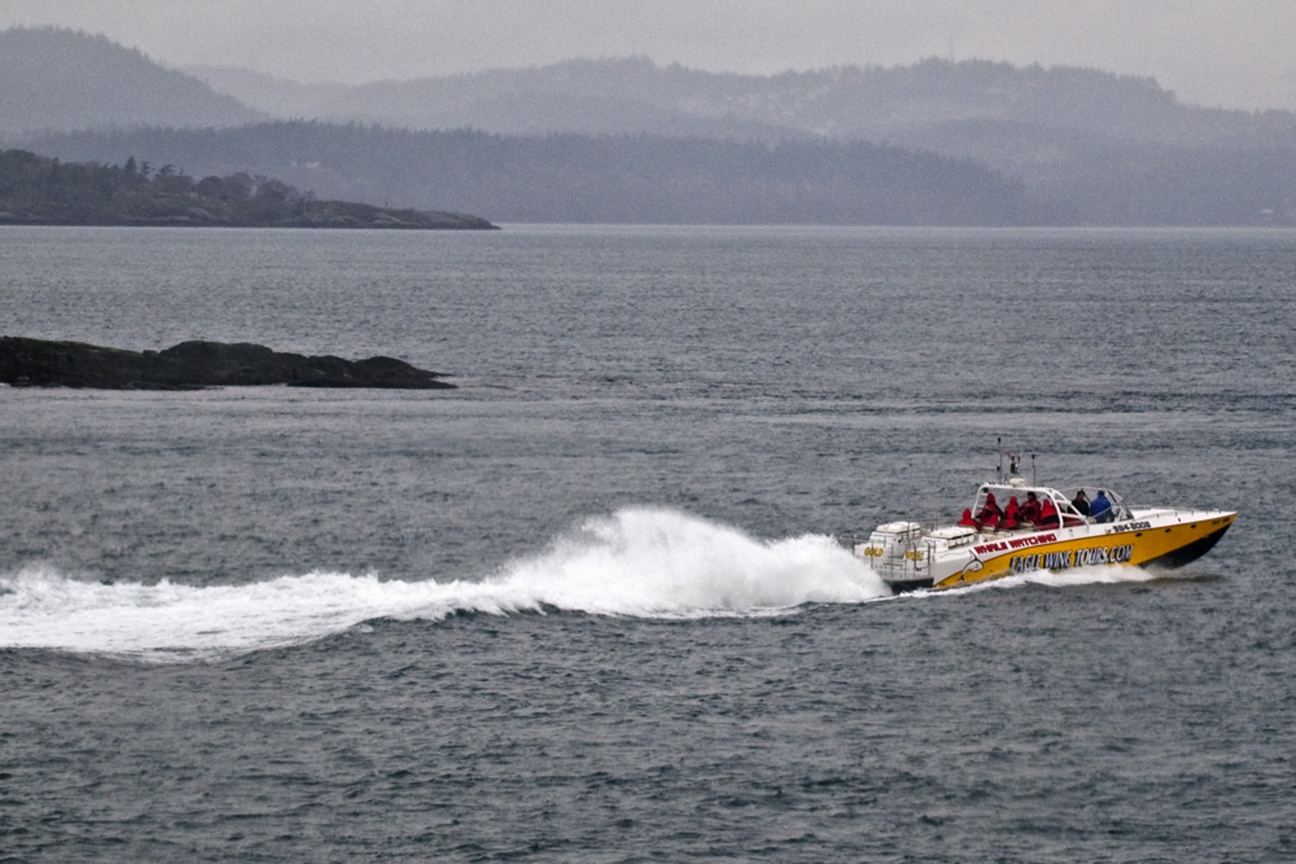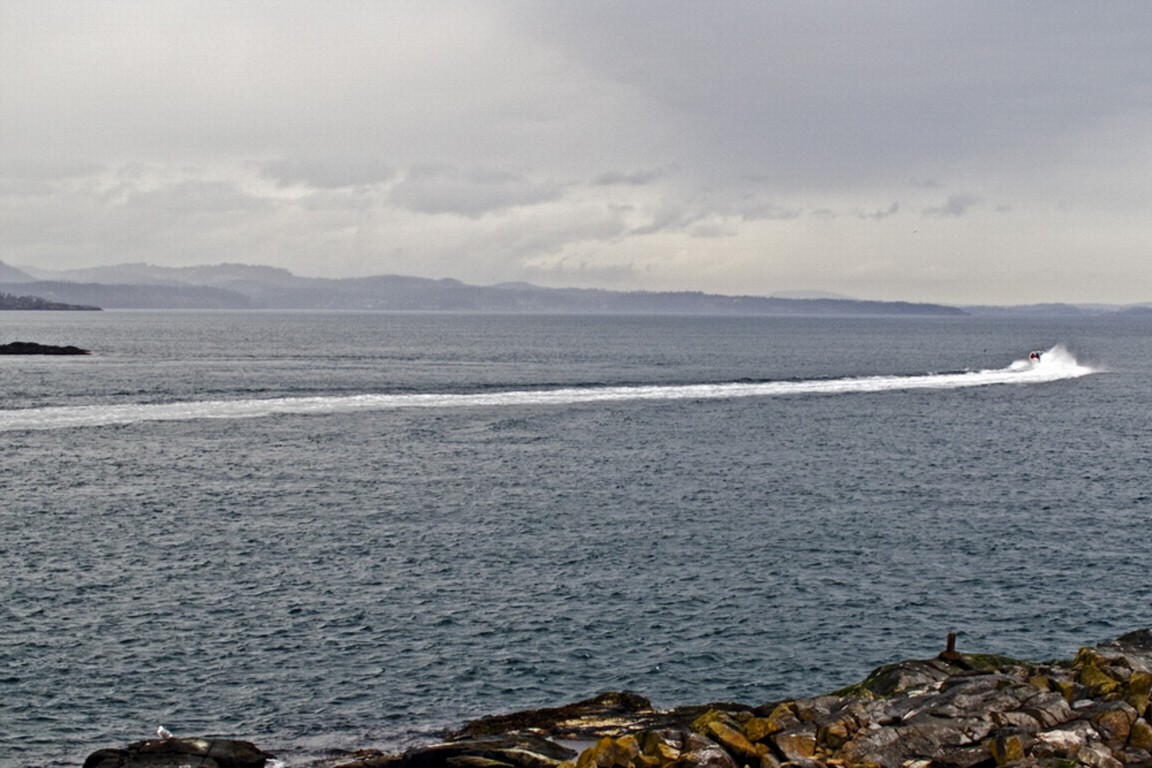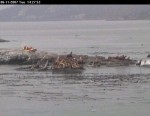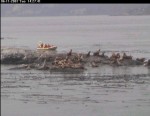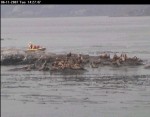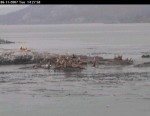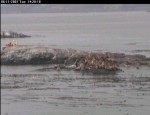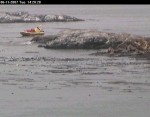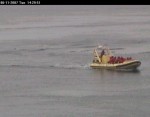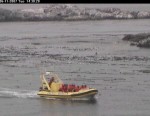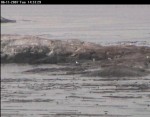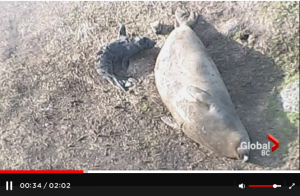North westerlies 20-25 knots most of the morning. After noon the winds picked up considerably. Sky has been changing all day. Sun and clouds. Heavy fog in the morning. Light winds forecasted for tomorrow morning with 15-25 knots later in the day. 1 whale watching boat. 1 illegal fishing boat (recreational) A northern rough-winged swallow was spotted on the reserve today. Today a rental boat from Pedder Bay Marina entered the reserve around 1500h. The driver was moving the boat into kelp beds, where it would temporarily anchor in the seaweed. The men would fish until the boat was pushed out by the current and then would move to another kelp. I called PBM and they sent a boat to come inform them of the eco-reserve boundaries, and the Rockfish Conservation Area, and reported the incident to DFO. The boat left around 1600h. They caught two fish and released one.
Category Archives: Admin
Gale
Clear skies. Gale force West winds all day. Force 6-8
The barometer has been on a very slow rise from 1018 hPa all day. The gale warning continues for tomorrow.
4 tour boats
1 dive boat
3 halibut boats on the edge of the reserve
A recreational fishing boat was cleaning their catch (from somewhere else) North of Middle Rocks. They were tossing something (food of some sort) into the water a luring the seagulls over, and swinging at the gulls with a paddle. They didn’t hit any gulls, but I was pretty unimpressed. Sadly, as far as I know, there is nowhere to report people just being idiots on the water.
There is an amazing, thick blanket of fog extending from the Sooke basin, over the Sooke hills, and petering out towards William Head. Like someone smeared a thick layer of grey icing on the landscape. There is also a low layer of marine fog to the South of me, just in front of Washington. The freighters are slipping in and out of view as they move up and down the Juan de Fuca. I am very happy that the fog stayed away from Race Rocks all day.
-Finished tidying my house for Max’s 5 day shift. He’ll be out here starting tomorrow morning until the 12th. I will post his observations when I get back on station.
Romanzoffia tracyi : Mist maidens–The Race Rocks Taxonomy
Romanzoffia tracyi
Scientific classification
Family: Boraginaceae (Borage)
Subfamily: Hydrophylloideae (Waterleaf)
Genus: Romanzoffia
Species: R. tracyi (Jepson)
Common name: Tracy’s mistmaiden
- Botanical drawing
- Close up
- B1
- Locations of R Tracyi (2014)
General: Perennial herb from well-developed, brown-woolly basal tubers; stems several, ascending, long glandular-hairy, 2-12 cm tall [1].
Angry birds
Clear skies. Moderate to strong West wind. Force 5.
The barometer has levelled out around 1007.0 hPa. The forecast is for the moderate to strong West winds to continue.
Big tides and currents these past few days: Low tide is 0.3m and high tide is 2.3m today, and the current is running -6.1kn and +5.6kn.
17 tour boats
6 recreational boats
3 boats fishing on the edge of the reserve
There could be two Cackling geese on the island, or it might just be two small, scruffy Canada Geese, it’s pretty hard to tell. I saw a Canada goose attack a Gull today and break the Gulls wing. I also saw a Gull chase a Canada Goose away from its nest. Lots of antagonistic birds with all this nesting. Judging by the disaster that I have to wash off the solar panels every day, the Gulls are capitalizing on these low tides and catching lots of small fish. I find entire fish skeletons and lots of scales among all the poop on the solar panels. The Elephant seals spent most of the day in the water by the jetty. There are 5 super fat and healthy-looking California Sea lions hanging out on/making a mess of the jetty. I saw the river otter sneak up from the water by the crane and hang out under the crane deck. I think it has a hole/home somewhere under the walkway between the crane deck and the tank shed. I have only ever seen a single otter, but I wonder if it is two and I just never see them together.
I will go as far to say that two recreational fishing boats almost wrecked on the South seal rocks today, but they probably don’t even know how close they came to doom. Two rental boats from Pedder Bay marina came ripping East to West between Great Race and the South seal rocks (which is about a 30m gap). It was pretty close to max flood with the water moving at about 5kn. By sheer luck, they both made it past the rock slab of the South Seal rocks, but I heard one of the boats bottom out on a rock turning around the South-West corner of great race. Thankfully that made him turn away from Great Race because he was headed straight for a very shallow, very sold rock that sits just below the surface. I reported it to the Pedder Bay Marina since they have asked that we contact them when their rental boats are in the reserve. Boating tip from Race Rocks: if there is a patch of ocean that looks like a river, with standing waves and whirlpools, go around it not through it.
-started spring cleaning the Keeper’s house
-pulled nails and tacks from walls, puttied, and did some paint touch ups in the Keeper’s house
-painted upstairs door frames in Keeper’s house
New Donors to 1% for the Planet for the Support of Race Rocks
Canada Geese
Clear skies. Light winds.
The most Canada geese that I have counted to date is 33. The Canada goose (Branta canadensis. Not “Canadian goose”, they do not have citizenship) is a regular visitor/resident out here at Race Rocks. The species has 11 sub-species, many of which experienced a dramatic decline at the beginning of the 20th century because of hunting pressure and habitat loss. However, in the last 25 years the species has experienced a strong recovery. There are many groups that have also ceased to do their seasonal migration. They have recovered to a point where they are now considered a pest in many places. The main reasons for their change in status and migrations has to do with the bird’s adaptability. It has thrived under decreased hunting pressure and changes in weather/climate. This has combined with an increase in protected grassy areas (eg lawns, golf courses, and parks) and agricultural practices that leave waste grain in the fields over the winter. The species is considered to be invasive in New Zealand, where it was intentionally introduced as a game species. The species was also introduced, and has also migrated, to the UK and several Scandinavian countries. The species’ adaptability means that the Canada Goose is now the most numerous waterfowl in North America.
Ecotour Boats at Race Rocks–Observations on Human Impact.
The Problem with Ecotourism boats:
- April 5, 2016. An ecotour boat passes throught the narrow south channel.
- This is where the harbour seals have pups coming up at this time of year
- March 25, 2016 Skipper taking photos
- February 28, 2016 A too-close monster boat
- February 26, 2016
- February 26 2016
- February 12, 2016
- February 9, 2016
- Jan. 5, 2016 The vessel appears much closer than 100 meters to sealion on Turbine Rock
- November 9, 2015 Whale watching closer than is allowed by the guidelines
- October 19, 2015 They behaved well once they came closer and saw us.
- April 6, 2016 This may be a better position for viewing, although still very close and there are animals in the water, near the boat, which has propellors turning to maintain position.
We are well aware that the marine ecotourism industry is important to the economy of the Victoria and Sooke area, and over the years have had good record of cooperation with the whale watching companies in the observation of regulations for marine mammal and bird viewing at Race Rocks. There are times however when the operation of individuals in their fleet of vessels within the reserve is not in keeping with the ultimate goal of ensuring sustainability of this resource.
The Recommendations for Marine Mammal observation at Race Rocks:
These two maps show the reality of the distances involved at Race Rocks:
- Measured distances in the Race Rocks Archipelago. recommended minimal viewing distance from nesting birds or marine mammal haulouts.
- The red line shows the 100 metre distance from the land masses at Race Rocks North rock omitted form this view.
The regulations for Marine bird and mammal viewing as DFO policy is 100 metres. In the early negotiations about a marine protected area for Race Rocks, stakeholders agreed that the distance between the middle islands and Great Race be in under 200 metres would preclude any vessel from using that passage. It was agreed with the ecotourism community that they could transit that area near the centre line, either drifting or slowly under motor. The 200 metre zone would be respected however for all other parts of the Ecological Reserve .
The Pacific Whale-watch Association lists the folllowing regulations for the
RACE ROCKS SPECIAL OPERATING AREA
1. “Go Slow Zone” = 1/8 mile (220 yards) from any rock or landmass around Race Rocks.
2. Vessels will slow on their approach to Race Rocks such that speed at 1/8 mile (220 yards) from any rock or landmass is reduced to approx… 7 knots (minimal wake and wash, relative to the condition of the seas state at the particular time).
3. Vessels in the Go Slow Zone will remain as close to mid-channel as is practicable between the major rock outcroppings known as Great Race, North Race Rock, West Race Rock, and Helicopter Rock.
4. While in the Go Slow Zone vessels will transit the area with the current whenever conditions are suitable to do so. Drifting is encouraged relative to other boat traffic and where safe navigation is not compromised.
5. Vessels exiting the area may increase speed gradually outside the Go Slow Zone.
6. Vessels will remain 1/8 mile (220 yards) outside the Go Slow Zone whenever any whale species are present in the Race Rocks Reserve (Go Slow Zone).
This is the ” Be Whale Wise advice” from DFO for marine mammal viewing
Quote: from DFO: ” Why do we need guidelines?”
“The diversity and complexity of marine life in the coastal waters off British Columbia and Washington is truly extraordinary. It is a fragile world. Pollution, global climate change and other impacts are taking their toll at all levels of the coastal food web. Many species of marine wildlife, such as the endangered southern resident killer whales, are showing signs of vulnerability. Meanwhile, vessel traffic in our waters is steadily increasing, placing added pressures on marine animals and their habitats. We need to minimize our impact. These guidelines are designed to help you enjoy your wildlife encounter, and reduce the risk of disturbing marine wildlife.”
I have documented the History of how amendments to Marine Mammal Viewing regulations worked on over a decade have still not been included in the current Marine Mammal Viewing regulations at this post: https://www.racerocks.ca/?p=19751
Why we need updated regulations is clear from the following examples recorded at Race Rocks: Also see this tag for logs of vessel observations on viewing recommendations at Race Rocks.

March 2010: Unfortunately there are a very few individuals in the whale watching industry who continue to give a bad name to the usually cooperative group of skippers and operators. The following sequence of images was taken on March6, 2010. The ecotour boat made a short tour of the reserve but was in a rush to leave, accelerating in the waters between Great Race and North Rocks creating wake as it sped out of the reserve.
Below, a viewer on the remote camera 5 captures a sequence of one tour boat with an impact on the sea lions in November 2007.
- Note vertical posture of sea lions alerted. (Time 14:27:41)
- The tour boat continues its approach
- The sealions stampede into the water.
- The viewer did note that ” … the tour boats of that company are normally more considerate than this…..”
- Almost all the sealions are gone from the north side. The boat turns back and heads to the south side.
- The time elapsed recorded on each picture shows that this took place in the span of 6 minutes.
- Entering the south channel between Middle Rock and Great Race Rocks
- Now the boat comes around to the south side of middle Rock and proceeds to scare off the remaining Northern Sea lions clustered there. (Time 14:30:20)
- Unfortunately a few minutes were missed as another viewer took control of the camera and moved it away from the scene. At the end of their “tour” no sea lions were left on the middle islands. (Time 14:33:29)
Ecotourism can have both positive and negative effects. In this video, you see two ecotourist whale-watching boats from Victoria B.C. that demonstrate two methods of viewing marine mammals. The yellow boat, rounds the middle rock inside the kelp bed, much too close to the island which is covered with northern sea lions and a few California sea lions. Since the animals on the North side of the island do not see the boat coming at this close distance, they are startled and about 25 of them take to the water. The high profile of the boat is increased by the individuals standing on the top of the boat, probably adding to the scare value.
The white boat, comes down the main passage between Great Race and the middle rock. They have approached slowly, drift with the current and present very little impact on both the sea lions on the middle rock and the harbour seals hauled out on the main island down in the foreground. Missing from this video however is video of their departure from the reserve where they swing in very close to the end of the docks, causing a stampede of a dozen sea lions in that area. Disturbance of any marine mammal colonies by vessel operators is against the law. Every time an animal has to change it’s behaviour because of human behaviour, there is a cost in terms of energy expenditure.
September 8, 2009: some whale watching boats still fail to stay a good distance off shore for viewing. It is questionable whether voluntary guidelines are adequate to ensure the ongoing sustainability of this resource as the number of whale watching boat visits continues to increase. In this video, the extent of ecotourism on a calm day and the effects on marine life are discussed.
Orcas, Weaner
Weather has continued to be cold, dipping below zero degrees. Wind has persisted all week NE-E generally over 20 NMPH. Clouds have settled in over the past couple days so it is feeling a bit warmer, forecast for flurries today/this evening.
We were able to get off the island Friday morning for a quick run for provisions. By the time we came back out around noon there were already 3 foot Easterly swells picking up.
Yesterday a pod of around 10 orcas passed by on the West side of Race Rocks heading NE towards Victoria. A group of Pearson divers got to see them from Second Nature on their way for a dive at Swordfish Island.
Bertha left Friday night or early morning Saturday. The young male from middle rock was in the jetty Saturday morning, first time i have seen him on the main island. Chunk has seemed a bit restless. He made his way around the south side of the Science house yesterday and over to main house. He saw the young male in the jetty and chased him into the rocks on the W side of jetty. Chunk went into the water and waited around the jetty, a bit of a standoff. Eventually young fellow made it into the water and I saw Chunk coming back up the ramp around dusk. He seems very uninterested in the pup which is quite different from two years ago when Misery chased and bit Squall all the time. The pup hasn’t moved much and is sleeping a lot.
Feb 8: 2 ecotour vessels in reserve. One vessel caused a disturbance of sea lions on East rocks.
Feb 9: float plane flew over. Sports fishing boat entered reserve in afternoon and was fishing in reserve. I tried contacting them on the VHF radio but they did not respond, I waved at them but they kept on fishing. They didn’t stay long and left for Pedder Bay so I called the marina and reported the incident. The staff person on duty at the marina spoke with the 3 individuals who were apparently not aware of the fishing ban. We have photos and their ID info on record and will report them to DFO if they repeat their offence. Thanks once again to Pedder Bay Marina and their staff for their cooperation and support!
-picked up parts for plumbing drain in main house, bar oil for chainsaw
-cut, chopped, stacked wood
-worked on wiring in station boat, attaching new running light
-shore-master for Pearson divers Sat afternoon
-worked on drain plumbing in main house
Video: Elephant seal pup born on Vancouver island is an online star : Global TV
(Global TV toured the waters of Race Rocks and did an Interview with the Ecological Reserve Warden Garry Fletcher on January15: Click on the image to see the article .
An elephant seal pup is getting used to the watchful eye of the Internet.
Its every move is being broadcast by a webcam to people watching around the world.
It was born in the early morning hours of January 14 at Race Rocks Ecological Reserve in the Strait of Juan de Fuca just off the southern tip of Vancouver island.
The reserve says this is the fifth pup born to a female called Bertha since January 2009.
Race Rocks is the only place in Canada where elephant seals breed and while other baby seals have been born on the reserve’s other islands, they’ve been washed out to sea by the waves.
Elephant seals were hunted to near-extinction in the 19th century, but are now protected under the Fisheries Act.
Elephant seals more durable than internet networks
I checked on the pup briefly this morning (so far unnamed as we will wait for a while to make sure he has a good chance of survival.) I said “he” because Alex thinks it is probably a male because of a tell-tale opening midway from umbilical to tail.
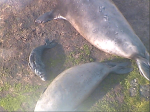 This picture taken at 11:15 AM from camera 1 shows all is well and the male Chunk (top) is not bothering the pup or the female.
This picture taken at 11:15 AM from camera 1 shows all is well and the male Chunk (top) is not bothering the pup or the female.
Hopefully you can take advantage of the documentation we have on the website of our observations of elephant seals at Race Rocks Ecological reserve.……more tomorrow…..
